This post is a real example of something I thought, like many videos, was lost for ever. Just for fun, back in 1970 I shot some black and white 8mm film of the fledgling TV Studio. We had the ability to add an incredibly small magnetic stripe to the edge of the film allowing us to create a sound track. It’s all rather amateur because I had to record the track in ‘real time’ and put it directly onto the sound stripe, hopefully in sync with what was happening, as far as the pictures were concerned that is.
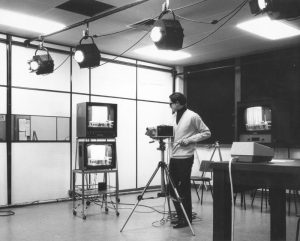 The film gives a behind the scenes view of what we had then created in the studio. We had little or nothing to work with and the original cameras were basic to say the least, but we managed. That’s me in the picture on the right with one of those cameras. You’ll see the array of old monitors and the Ampex video recorder too. Nothing really exists from that period except the rare recording with former Rector Lord Penney. I did however shoot some film from the TV screens and although there’s a strong flicker it does at least record what was going on.
The film gives a behind the scenes view of what we had then created in the studio. We had little or nothing to work with and the original cameras were basic to say the least, but we managed. That’s me in the picture on the right with one of those cameras. You’ll see the array of old monitors and the Ampex video recorder too. Nothing really exists from that period except the rare recording with former Rector Lord Penney. I did however shoot some film from the TV screens and although there’s a strong flicker it does at least record what was going on.
The film captures the changes into something that was to become more like a TV Studio. I had the film, but had never bothered to try to get it on video. When the studio closed in Feb 2007 most of the equipment was put into a skip, but I made sure I kept the Eumig 8mm sound projector as this would be the only way to play back the sound track. This actual projector was used to record the track in 1970. I never thought I’d be able to rig it all back up and get the sound track off, but I did. A little bit of modern post production has improved the sound a little. So, here for the first time in 46 years is that film which captures another small part of the Imperial College history.
Colin Grimshaw November 2016
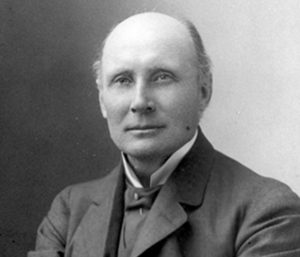
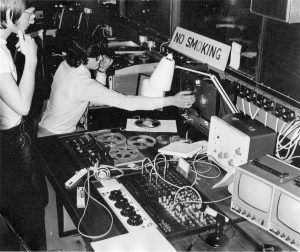
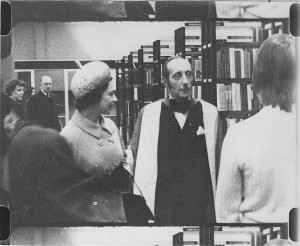
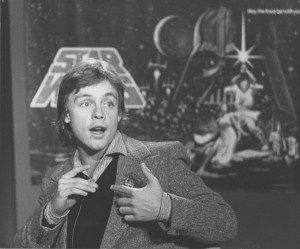 38 years ago on 15 December 1977 Mark Hamill visited Imperial College to promote the forthcoming release of a new film. That film was Star Wars. We were lucky to get him to visit the TV Studio (then in Electrical Engineering Building) as part of the publicity rounds to promote the film. I suspect we’d never get a look-in these days, but back then no one had heard of the film and they needed every drop of publicity. Coming to the studio for the STOIC interview was closely timed because we’d been informed that he was next going to the BBC TV Centre for a live appearance on Blue Peter (the Children’s TV Show). The photo on the left was taken in the studio at the time of the recording. He was talking to James Sinclair who also happened to be the STOIC chairman at the time.
38 years ago on 15 December 1977 Mark Hamill visited Imperial College to promote the forthcoming release of a new film. That film was Star Wars. We were lucky to get him to visit the TV Studio (then in Electrical Engineering Building) as part of the publicity rounds to promote the film. I suspect we’d never get a look-in these days, but back then no one had heard of the film and they needed every drop of publicity. Coming to the studio for the STOIC interview was closely timed because we’d been informed that he was next going to the BBC TV Centre for a live appearance on Blue Peter (the Children’s TV Show). The photo on the left was taken in the studio at the time of the recording. He was talking to James Sinclair who also happened to be the STOIC chairman at the time.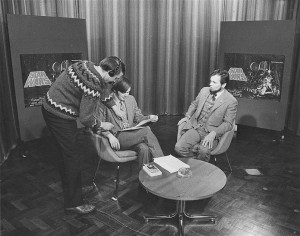 Sadly this interview is one of those programmes now frozen in time on the old Ampex A format one inch videotape which sadly we cannot now play without a machine and those are now rare. We were still a few years away from moving into colour so the Mark Hamill interview is in black and white. For copyright the film clips are removed.
Sadly this interview is one of those programmes now frozen in time on the old Ampex A format one inch videotape which sadly we cannot now play without a machine and those are now rare. We were still a few years away from moving into colour so the Mark Hamill interview is in black and white. For copyright the film clips are removed.